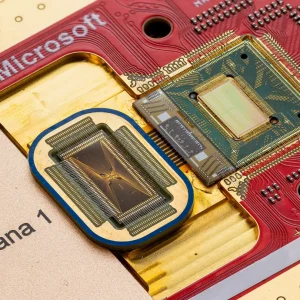
Apple CEO Tim Cook was not exaggerating when, during a fourth-quarter earnings call with analysts, he said, “AR is going to change everything.”
He was right. Augmented reality (AR) is creating a new model for the mass-use of technology. We all know how quickly we moved from typing on a PC keyboard, to tapping and swiping a smartphone, to simply voicing our requests to Alexa or Siri. Now AR brings us to the age of holographic computing. Along with animojies and Pokémon and face filters, a fresh and futuristic user interface is emerging.
Instead of lasers (required for textbook holography), holographic computing is coming to us now through our phone screens. This is leading to a real surge in the use of hologram-like 3D that will completely change how we interact with the world — and each other.
Examples are popping up everywhere in the consumer tech landscape. Apple’s release of iOS11 puts AR into the hands of over 400 million consumers. The new iPhoneX, for example, has been designed for the delivery of enhanced AR experiences with 3D cameras and “Bionic” processors.
Google too has recently launched the Poly platform for finding and distributing virtual and augmented reality objects, while Amazon has released Sumerian for creating realistic virtual environments in the cloud. We also have an active AR-native content-creation movement along with a steady stream of AR features coming from Facebook, Snapchat, Instagram, and myriad other tech players.
Holography and 3D Experiences are Escaping the Games Arena
While captivating 3D user experiences are obviously attractive for gaming and entertainment, we can see how they are capable of so much more. Powered by the popularity of games and filters, the experience of holography will become ever-more familiar, with its new interfaces starting to dominate other functions that are well-suited to its charms.
Already, the technology is making inroads in two areas – training and customer experience. In training, holography is useful for virtual hands-on guidance to explain a process, complete a form or orient a user. It also can simulate real-life emergency scenarios, sales interactions and so on.
Holographic computing interfaces complement traditional instruction with added dimensionality. AR enhancements can be overlaid for greater depth and variety in information presentation, providing for example, floating text bubbles to supply detail about a particular physical object. It can equally provide chronological procedure-mapping for performing a task, or add virtual arrows pointing to the correct button to push on a console.
There are countless opportunities for adding more digital information to almost anything within range of a phone camera. With less need to travel to a classroom, interactive, immersive 3D presentations can be projected on any desk, wall, or floor and which can be “experienced” through the screen in your hand. And unlike the passivity of watching video, holographic interfaces add an extra experiential element to the training process, allowing users more readily to contextualise what they are learning.

Customer Experience is Well Ahead in AR
In customer experience consumers are already using AR and holographic computing for self-selection, self-service, and self-help. Yet that is not the limit of its applicability. Soon consumers will be using it for even more. IKEA, for example, has an AR app that lets you point your phone at your dining room to see how a new table will look in the space. A customer can point his or her phone at the shipping box to be holographically guided through the assembly process when it is delivered.
Holographic computing will also emerge as the preferred means of getting product information and interacting with service agents. Walk-throughs of hotel rooms and holiday locations with a 3D virtual tour guide, travel planner or salesperson are not too far off in the future, either.
We Will all Become Familiar with AR
There are other appealing use cases, of course. And as adoption and implementation spread, there will be many instances where this new user interface is preferable and will quickly become second nature.
It is an area of rapid development. Along with the Apples, Googles and Facebooks of this world, there are a number of new entrants to the AR contest. The sheer amount of money being thrown at speedy development shows that the ultimate nature of the holographic user interface is up for grabs. Will it remain phone-based or involve glasses? Will it shift to desktop or evolve beyond our current hardware, with on-eye projection technology? All of the above? Who can say?
One thing we do know for sure is that significant intellectual capacity is being invested by companies of all types to extract maximum effectiveness from this emerging technology. The increased dispersal of AR experiences in all their incarnations, combined with the increased accessibility brought by our smartphones, will drive mass-adoption and create widespread affinity for the holographic interface.






